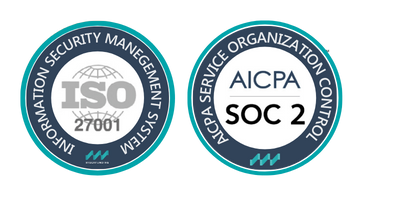At the heart of international trade and economic growth, Export Credit Agencies (ECAs) are more than just institutions; they’re the lifeblood that pumps vitality into global commerce. By offering insurance, loans, and guarantees, they don’t just encourage exports and overseas investments; they breathe life into domestic companies’ global aspirations. These agencies are not just cogs in the economic machine; they’re the artisans crafting opportunities for growth, job creation, and stronger international bonds through trade. However, the path to growth and opportunity for ECAs is entangled with the complex challenges of credit risk management.
Navigating through the multifaceted landscapes of emerging markets, ECAs encounter high-reward but high-risk scenarios. The ability to make informed decisions in these markets is crucial and depends heavily on nuanced, region-specific data. The task of balancing risk and opportunity extends beyond just emerging markets. Operating across multiple jurisdictions, ECAs face a labyrinth of compliance and regulatory frameworks, adding layers of complexity to their operations.
Amidst this backdrop, ECAs also grapple with the inefficiencies of existing risk assessment methods. Many risk models currently in use are outdated, relying on static indicators that struggle to adapt to the fast-evolving economic landscape. Picture using an old map in a rapidly changing landscape; that’s what relying on outdated risk models feels like. These models, stuck in the past, struggle to keep pace with the dynamic economic environment where even a tweet can send ripples across markets. Traditional models, with their limited scope, often overlook alternative data sources such as behavioural economics, trade restrictions, and ESG factors, which are essential in a comprehensive risk assessment.
The reliance on manual processes, prone to human error, not only slows down the risk assessment but also increases the likelihood of significant financial losses. These inefficiencies underscore the urgent need for modernising risk assessment approaches to align with the dynamic and interconnected nature of today’s global economy.
Technology to lead the way
In response to these challenges, technological innovations like Artificial Intelligence (AI) and Machine Learning (ML) present promising solutions. These cutting-edge technologies can process massive data sets, identifying patterns and risks that would be impossible or exceedingly time-consuming for humans to discern. By leveraging AI and ML algorithms, ECAs can overcome the limitations of traditional models, making risk assessment more accurate, efficient, and adaptable to changing market conditions.
As ECAs stand at the crossroads of risk and opportunity, their ability to effectively manage these risks is pivotal, not just for their success but also for the economic vitality of the nations they represent. Innovations in credit risk management are no longer just a technological necessity but a strategic imperative in today’s interconnected global economy. The stakes are incredibly high, ranging from financial stability to national security, making a new era of credit risk management, augmented by technological innovation and real-time data analytics, an absolute necessity.
The role of ECAs, therefore, is a delicate balancing act, a tightrope walk between the risks and rewards of international trade and investment. In navigating these waters, robust credit risk intelligence becomes their indispensable compass, guiding them through challenges and opportunities alike. The margin for error is small, and the need for advanced credit risk solutions is greater than ever. As ECAs embrace this new era of risk assessment, they continue to play a crucial role in shaping global trade dynamics, driving economic growth, and fostering international relationships.
Are you looking to streamline the evaluation process, offering a more comprehensive risk profile and minimising the time-consuming aspects of assessing international businesses? Learn more here.
SIMILAR POSTS

8 August 2024
Zombie Firms: The Transformative Impact of Private Credit and Bankruptcy Reforms
The rise of zombie firms is a growing concern in today's economy. Extended low interest rates and economic disruptions [...]

2 August 2024
The Rise of Private Credit
The Rise of Private Credit: Transforming Corporate Debt and Governance Over the past generation, corporate America’s debt markets have undergone [...]

31 July 2024
Embracing Generative AI in Credit Risk
Embracing Generative AI in Credit Risk: A Transformative Opportunity Generative AI is rapidly gaining traction in various industries, including the [...]



